
Images
Scope & Guideline
Exploring the Intersections of Visual Culture and Society
Introduction
Aims and Scopes
- Visual Culture and Jewish Identity:
The journal explores how visual representations, including art, manuscripts, and artifacts, shape and reflect Jewish identity across different historical contexts. - Interdisciplinary Approaches:
It employs a range of methodologies, including art history, cultural studies, and religious studies, to analyze Jewish imagery and its impact on society. - Materiality and Meaning:
The significance of material culture—how objects and their physical properties contribute to cultural and religious practices—is a core focus, examining items like ritual objects and manuscripts. - Historical Contextualization:
The journal emphasizes the importance of historical context in understanding visual artifacts, linking them to broader socio-political and cultural narratives. - Contemporary Jewish Art:
It also addresses contemporary issues in Jewish art, including the interactions between modern artists and traditional themes, highlighting ongoing dialogues within the community.
Trending and Emerging
- Contemporary Artistic Engagement:
There is a growing trend towards examining contemporary Jewish artists and their engagement with historical and cultural themes, indicating a vibrant dialogue between past and present. - Multidisciplinary Methodologies:
Recent publications increasingly utilize multidisciplinary methodologies, integrating art history, sociology, and digital humanities, to provide richer analyses of Jewish visual culture. - Visual Narratives of Trauma:
The exploration of trauma, particularly in relation to Holocaust narratives and their visual representations, is gaining importance, reflecting a broader interest in how images can convey complex emotional and historical experiences. - Material Culture Studies:
An emerging focus on the materiality of objects and their cultural significance is evident, with studies addressing how physical artifacts shape Jewish practices and identities. - Intersections of Faith and Art:
There is a notable increase in themes exploring the intersections of faith and art, particularly how contemporary artists reinterpret religious symbols and narratives within modern contexts.
Declining or Waning
- Traditional Religious Art Forms:
There appears to be a waning focus on traditional religious art forms, such as synagogue architecture or classical religious iconography, as the journal shifts towards contemporary interpretations and dialogues. - Historical Manuscript Studies:
The emphasis on purely historical manuscript studies has decreased, possibly in favor of more interdisciplinary and contemporary approaches that combine history with modern artistic expressions. - Geographical Specificity:
Themes specifically tied to particular geographies, such as Jewish life in isolated communities, seem to be less prevalent, indicating a potential shift towards more global or comparative analyses. - Static Representations of Identity:
There is a noticeable decline in discussions centered around static, traditional representations of Jewish identity, as the journal increasingly embraces dynamic and evolving narratives.
Similar Journals
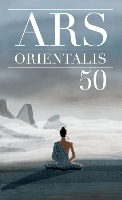
ARS Orientalis
Cultivating Knowledge in the Realm of Art and ArchaeologyARS Orientalis is a distinguished academic journal published by the Smithsonian Institution's Freer Gallery of Art, specializing in the fields of archaeology, cultural studies, and the visual and performing arts. With an ISSN of 0571-1371, this journal contributes significantly to scholarly discourse, having established a robust timeline of publication since its inception, notably from 2001 to 2006, 2010 to 2012, 2014 to 2017, and resuming again from 2022 to 2023. Though currently not open access, it maintains a respectable standing in the academic community with a categorization into Q3 quartiles across several disciplines, highlighting its relevance amid rigorous scholarly evaluation. The journal is particularly valuable for researchers, professionals, and students who seek to explore interdisciplinary connections within its scope. Situated in the United States, it aims to disseminate insightful research that bridges the gap between traditional scholarship and contemporary studies in visual culture and archaeological findings.
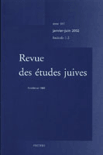
REVUE DES ETUDES JUIVES
Fostering Dialogue on Cultural and Historical NarrativesREVUE DES ETUDES JUIVES, published by PEETERS, stands as a vital platform for scholarly discourse in the realms of Cultural Studies, History, Literature and Literary Theory, and Religious Studies. Based in Belgium, this journal, bearing the ISSN 0484-8616 and E-ISSN 1783-175X, has been faithfully chronicling research since its inception, with comprehensive coverage spanning from 1967, 1969, and several periods thereafter until 2023. Although categorized in Q4 quartiles across its fields—showing a diverse yet niche presence—it provides an invaluable space for emerging voices and established scholars to explore Jewish studies in a multidisciplinary context. Despite its compact impact factor and Scopus rankings reflecting its emerging status in the academic community, the journal is committed to fostering dialogue on the cultural and historical aspects of Jewish identity, offering a unique opportunity for researchers, professionals, and students to engage with contemporary and historical issues of Jewish significance. As a non-open access resource, it appeals to those seeking rigorous academic inquiry supported by Peeters' esteemed publishing acumen.
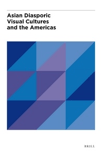
Asian Diasporic Visual Cultures and the Americas
Innovating Perspectives on Race, Ethnicity, and Visual PracticesAsian Diasporic Visual Cultures and the Americas is a pioneering journal published by BRILL, dedicated to exploring the intersections of visual culture, identity, and diaspora within the context of the Americas. With an ISSN of 2352-3077 and E-ISSN of 2352-3085, this journal has established itself as a significant resource for academics, researchers, and students interested in the visual arts and their broader social implications. Since its inception in 2015, the journal has been committed to fostering interdisciplinary dialogue, providing a platform for innovative research that examines how Asian diasporic communities express their identities through visual mediums. Despite its relatively recent establishment, it endeavors to challenge and expand the narratives related to visual arts in a diverse and globalized world. Though the journal currently does not offer open access options, it remains a vital asset for those engaged in understanding the critical dynamics of race, ethnicity, and culture in contemporary visual practices. Converging insights from both the arts and social sciences, this journal invites contributions that illuminate the complexities of diasporic experiences, making it a pertinent choice for those aiming to contribute to this evolving field.
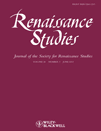
Renaissance Studies
Unveiling the Legacy of a Transformative EraRenaissance Studies, published by Wiley, stands as a vital academic platform within the disciplines of Cultural Studies, History, Literature and Literary Theory, Religious Studies, and Visual Arts and Performing Arts. With an impressive history of publication spanning from 1987 to 2024, this journal is recognized in 2023 metrics as a Q2 journal in four categories and Q1 in Literature and Literary Theory, reflecting its substantial impact in promoting interdisciplinary dialogue and research. The journal's robust Scopus rankings further underscore its relevance, including a position in the 83rd percentile in Literature and Literary Theory. Although not an open-access journal, it provides readers and contributors with access to curated, high-quality scholarship that explores the complexities of the Renaissance and its enduring influence on contemporary thought and culture. Researchers, professionals, and students alike will find Renaissance Studies invaluable in fostering discussions that bridge historical context with modern inquiry.
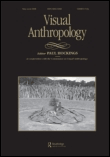
Visual Anthropology
Navigating the Intersection of Sight and SocietyVisual Anthropology is a distinguished journal published by Routledge Journals, Taylor & Francis Ltd in the United Kingdom. With an ISSN of 0894-9468 and E-ISSN 1545-5920, this journal focuses on the intersection of visual media and anthropological research, exploring the ways in which visual representations influence cultural practices and perceptions. Since its inception in 1987, Visual Anthropology has contributed significantly to the fields of Anthropology and Cultural Studies, earning a Q2 rank in both categories as of 2023. With a solid impact factor and strategic indexing, the journal maintains a vital place for scholars seeking to understand the visual dimensions of human behavior and societal structures. Although it operates under a traditional subscription model, its rigorous peer-review process ensures the dissemination of high-quality research. The journal invites researchers, professionals, and students alike to engage with cutting-edge studies that bridge visual culture and anthropological inquiry.

Iconographica
Cultivating Perspectives on Art and Cultural DynamicsIconographica is an esteemed journal published by SISMEL EDIZIONI GALLUZZO, dedicated to the exploration of cultural narratives through visual arts and performing arts. Based in Italy, this journal has been providing a platform for scholarly discourse from 2015 to 2023, and it serves as an important resource for researchers, professionals, and students interested in these interdisciplinary fields. Although indexed in the Q4 quartile for both Cultural Studies and Visual Arts, this journal offers valuable insights that encourage the examination and understanding of visual culture. While currently operating without an open access model, its rigorous peer-review process ensures high-quality academic contributions that reflect the evolving dynamics within these areas of study. Set against the backdrop of a rapidly transforming cultural landscape, Iconographica aims to foster engagement, inspire innovative perspectives, and cultivate a deeper appreciation for the interplay between culture and visual representation.

Material Religion
Investigating the Threads of Materiality in Spiritual PracticesMaterial Religion is a premier scholarly journal dedicated to examining the interplay between material culture and religious practices, published by Routledge Journals, Taylor & Francis Ltd, based in the United Kingdom. Since its inception in 2005, the journal has established itself as a vital resource in the fields of Religious Studies and Visual Arts and Performing Arts, holding a commendable Q2 quartile ranking and featuring a robust Scopus ranking that places it in the top 13% of its discipline. Designed to foster interdisciplinary dialogue, Material Religion offers a platform for innovative research that explores how material objects influence and are influenced by religious beliefs and practices. With no open access options, this journal continues to thrive as an essential reference for researchers, professionals, and students eager to understand the complexities of materiality in the context of religion and art. Positioned at the intersection of diverse academic fields, Material Religion not only contributes to scholarly discourse but also encourages critical reflections on how society engages with the material aspects of spirituality.

Religion and the Arts
Advancing Interdisciplinary Dialogues on Religion and Artistic ExpressionReligion and the Arts is a distinguished scholarly journal published by BRILL, based in the Netherlands, with a dedicated focus on the interdisciplinary exploration of religion and its interplay with various artistic expressions from historical and contemporary perspectives. Established in 1996, this journal serves as a vital platform for researchers, professionals, and students interested in Cultural Studies, History, Religious Studies, and the Visual and Performing Arts. Despite its current classification in the Q4 category across multiple fields, it remains committed to advancing academic discourse and fostering innovative approaches to understanding the complex relationships between spirituality and artistic creation. With its ISSN 1079-9265 and E-ISSN 1568-5292, the journal invites submissions that contribute to enriching this dynamic field, ensuring that a diverse range of voices and perspectives are represented. Although not an Open Access publication, the journal’s content continues to be pivotal for scholarly engagement and is essential reading for those dedicated to the study of art's profound connections with religious traditions.
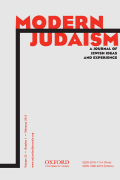
MODERN JUDAISM
Cultivating Insight into Jewish Culture and SocietyMODERN JUDAISM is a premier journal dedicated to the multifaceted exploration of Jewish culture, history, and religious practice, providing a significant platform for scholarly discourse since its inception in 1981. Published by Oxford University Press Inc in the United States, this journal stands out with its diverse engagement across disciplines, reflected in its commendable 2023 category quartiles: Q2 in Cultural Studies and History, Q1 in Religious Studies, and notable rankings in Political Science and Sociology. With an impact factor that underscores its rigorous peer-review process and scholarly relevance, MODERN JUDAISM serves as an essential resource for researchers, professionals, and students alike, fostering an academic environment conducive to innovative ideas and comprehensive studies. Although not open access, the journal remains crucial for anyone looking to deepen their understanding of contemporary Jewish thought and its intersection with broader cultural and political currents. For further inquiry or submissions, please refer to the Journals Department at 2001 Evans Rd, Cary, NC 27513.
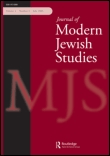
Journal of Modern Jewish Studies
Advancing Scholarly Dialogue in Jewish StudiesThe Journal of Modern Jewish Studies, published by Routledge Journals, Taylor & Francis Ltd, serves as a premier platform for scholarly discourse in the realm of Jewish studies, particularly addressing the contemporary intersections of culture, history, and political science. Established in 2002, this journal has become increasingly vital, as demonstrated by its categorization in the Q3 and Q4 quartiles across various fields, including Cultural Studies and History, showcasing its pivotal role within the academic community. Despite not being an open-access journal, it continues to maintain a robust ranking, being placed in the 74th percentile for History and 62nd percentile for Cultural Studies in the Scopus Ranks. This illustrates the journal's commitment to high-quality research and its significant contribution to understanding the complexities of modern Jewish life and traditions. Based in the United Kingdom, the journal's outreach and content are designed to engage researchers, professionals, and students who are passionate about exploring the diverse facets of Jewish identity and its implications in contemporary society.